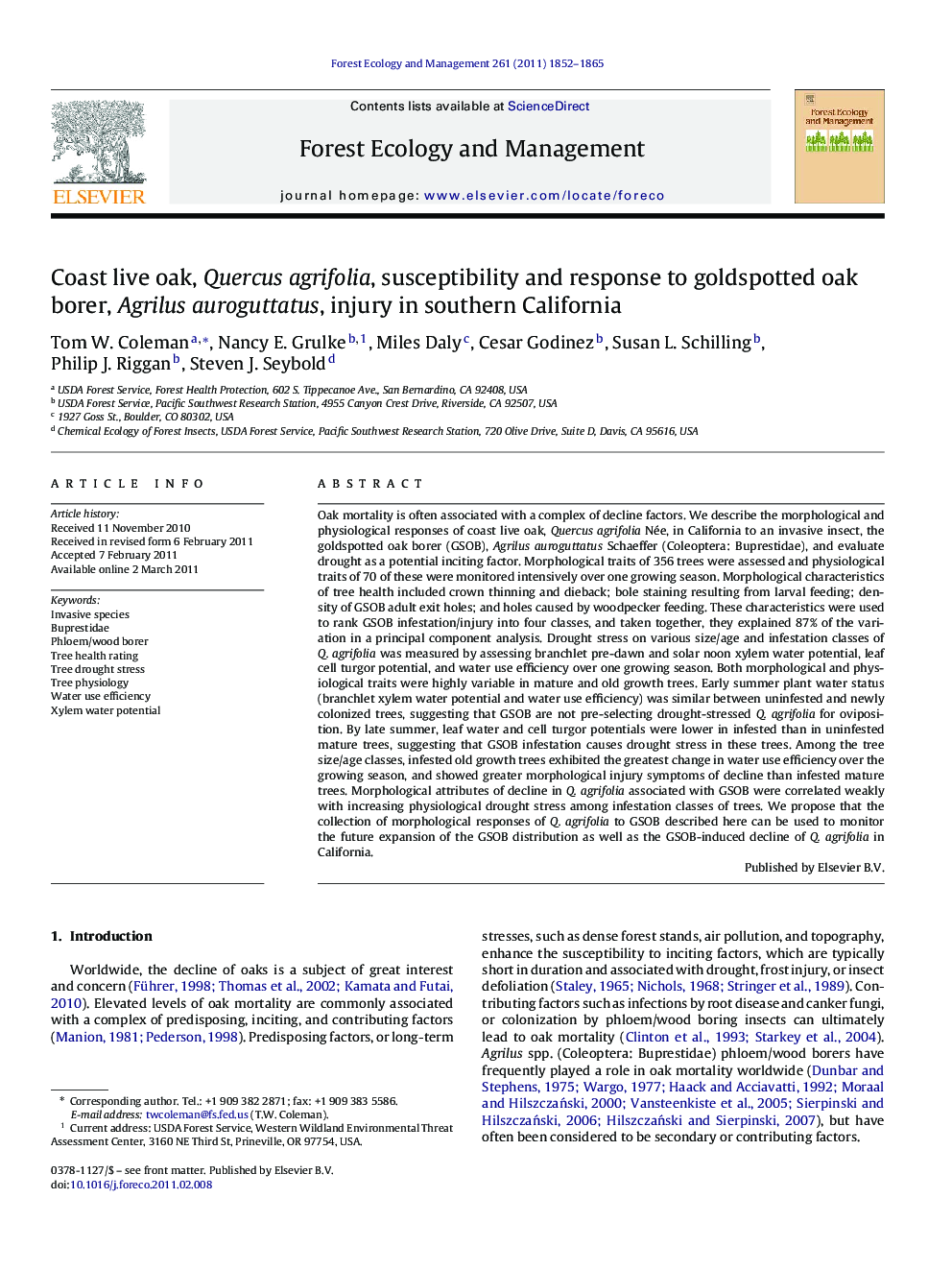| کد مقاله | کد نشریه | سال انتشار | مقاله انگلیسی | نسخه تمام متن |
|---|---|---|---|---|
| 87874 | 159270 | 2011 | 14 صفحه PDF | دانلود رایگان |

Oak mortality is often associated with a complex of decline factors. We describe the morphological and physiological responses of coast live oak, Quercus agrifolia Née, in California to an invasive insect, the goldspotted oak borer (GSOB), Agrilus auroguttatus Schaeffer (Coleoptera: Buprestidae), and evaluate drought as a potential inciting factor. Morphological traits of 356 trees were assessed and physiological traits of 70 of these were monitored intensively over one growing season. Morphological characteristics of tree health included crown thinning and dieback; bole staining resulting from larval feeding; density of GSOB adult exit holes; and holes caused by woodpecker feeding. These characteristics were used to rank GSOB infestation/injury into four classes, and taken together, they explained 87% of the variation in a principal component analysis. Drought stress on various size/age and infestation classes of Q. agrifolia was measured by assessing branchlet pre-dawn and solar noon xylem water potential, leaf cell turgor potential, and water use efficiency over one growing season. Both morphological and physiological traits were highly variable in mature and old growth trees. Early summer plant water status (branchlet xylem water potential and water use efficiency) was similar between uninfested and newly colonized trees, suggesting that GSOB are not pre-selecting drought-stressed Q. agrifolia for oviposition. By late summer, leaf water and cell turgor potentials were lower in infested than in uninfested mature trees, suggesting that GSOB infestation causes drought stress in these trees. Among the tree size/age classes, infested old growth trees exhibited the greatest change in water use efficiency over the growing season, and showed greater morphological injury symptoms of decline than infested mature trees. Morphological attributes of decline in Q. agrifolia associated with GSOB were correlated weakly with increasing physiological drought stress among infestation classes of trees. We propose that the collection of morphological responses of Q. agrifolia to GSOB described here can be used to monitor the future expansion of the GSOB distribution as well as the GSOB-induced decline of Q. agrifolia in California.
Research highlights
► Visual and physiological responses of oak borer injury were recorded in this study.
► Goldspotted oak borer populations are not pre-selecting drought-stressed trees.
► Severity of oak borer injury was correlated with an increase in tree drought stress.
Journal: Forest Ecology and Management - Volume 261, Issue 11, 1 June 2011, Pages 1852–1865